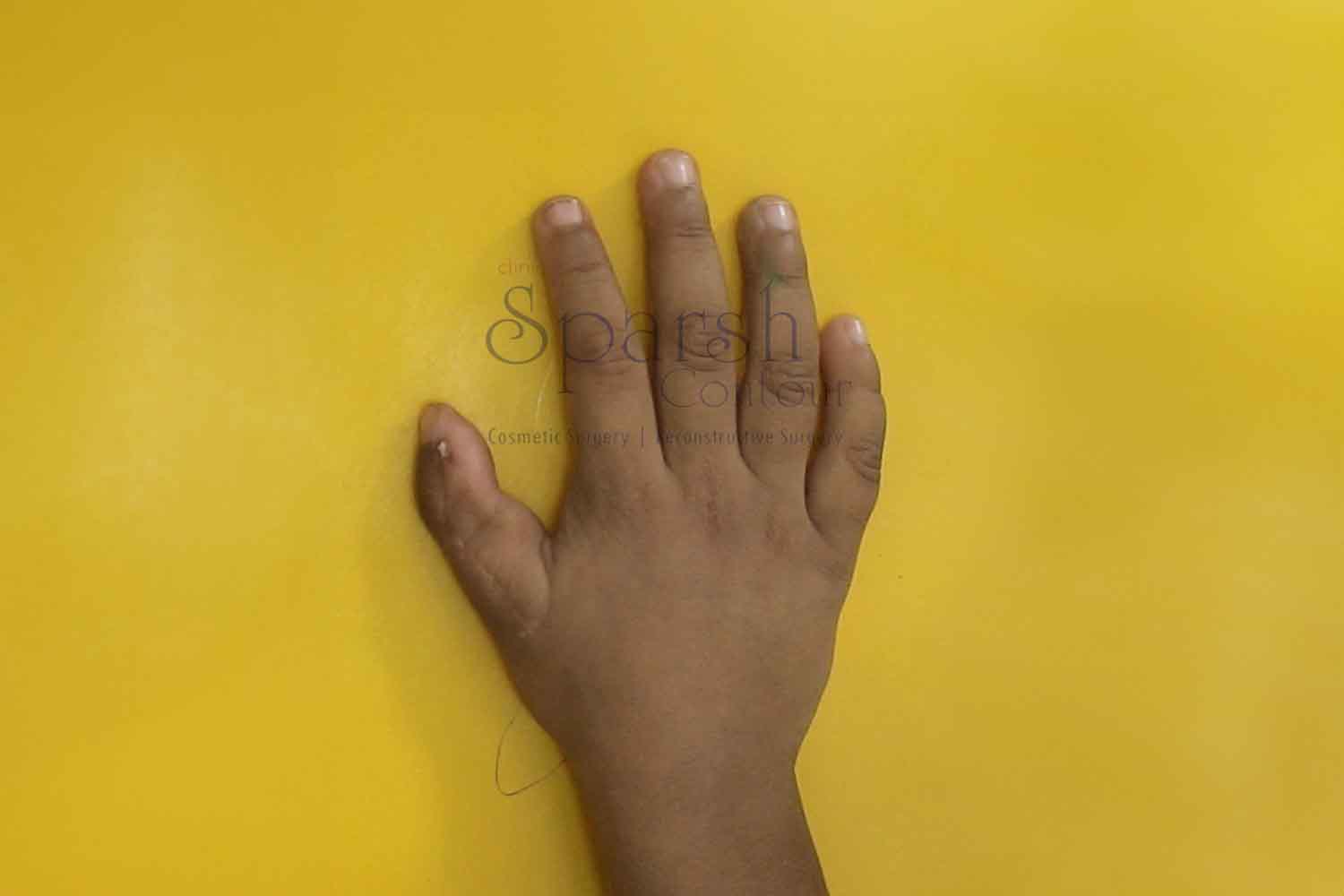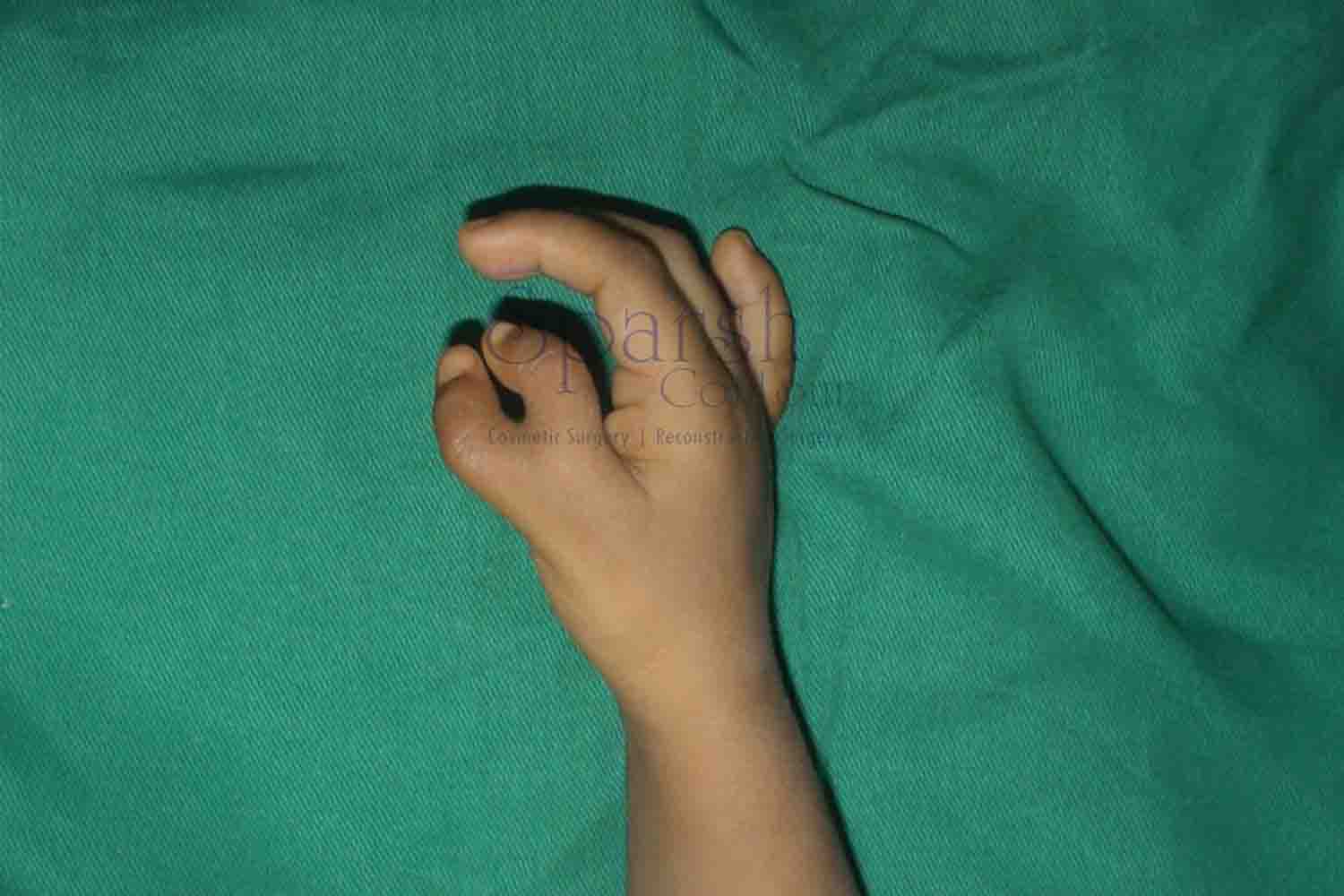Hand Surgery (Birth Deformities)
Polydactyly
Polydactyly is a deformity in which the hand has one or more extra fingers. This condition can occur in various forms, ranging from a small, poorly developed extra digit to a fully formed, functional extra finger or toe. Polydactyly is one of the most common congenital limb anomalies, and it can affect one or both hands and feet.
It can be inherited as a genetic trait or it can arise sporadically without any known family history. The extra digit may be composed of soft tissue alone, or it may contain bones, joints, and even tendons, making it a fully functional digit in some cases..
The extra finger can be removed surgically, when the child is between 1 and 2 years old, young enough that he won’t miss developmental milestones such as grasping (prehension), but late enough that he can tolerate anesthesia and surgery well. The timing and approach to surgery depend on the specific characteristics of the extra digit and the overall health of the child. Early intervention is often recommended to ensure optimal hand or foot function and to minimize any potential psychological impact.
It can be inherited as a genetic trait or it can arise sporadically without any known family history. The extra digit may be composed of soft tissue alone, or it may contain bones, joints, and even tendons, making it a fully functional digit in some cases..
The extra finger can be removed surgically, when the child is between 1 and 2 years old, young enough that he won’t miss developmental milestones such as grasping (prehension), but late enough that he can tolerate anesthesia and surgery well. The timing and approach to surgery depend on the specific characteristics of the extra digit and the overall health of the child. Early intervention is often recommended to ensure optimal hand or foot function and to minimize any potential psychological impact.
 After
After  Before
Before Drag
Hand Surgeries (Birth Deformities)
What are the different forms of polydactyly?
- skin and soft tissue —the simplest to remove
- skin, soft tissue and bone but no joint—more challenging to remove/remodel
- skin, soft tissue and bone with joint (closer to a fully-formed finger—most challenging to remove/remodel)
our expert answers
frequently asked questions
What causes polydactyly?
During normal embryonic development (while the baby is still in the womb), the hand initially forms in the shape of a paddle, and then—at about the sixth or seventh week of gestation—splits into separate fingers. Polydactyly results if there’s an irregularity in this process: An extra finger forms when a single finger splits in two.
How is polydactyly diagnosed?
Polydactyly can be seen by ultrasound prenatally, and after birth by clinical examination.
How is polydactyly treated, and at what age?
The extra finger can be removed surgically, when the child is between 1 and 2 years old, young enough that he won’t miss developmental milestones such as grasping (prehension), but late enough that he can tolerate anesthesia and surgery well.
What are the Complications of surgery?
Major complications after surgery are rare but often minor like scar formation, stiffness, instability, and late deformity. Most cosmetic or functional deformities can be addressed in later corrective surgery.
What is the outcome of polydactyly surgery?
Most of the young patients have full hand function and an improved appearance of the hand. It is possible that in a severe case, may need additional reconstructive surgery to recover full function and improve the hand’s appearance.
APPOINTMENT
